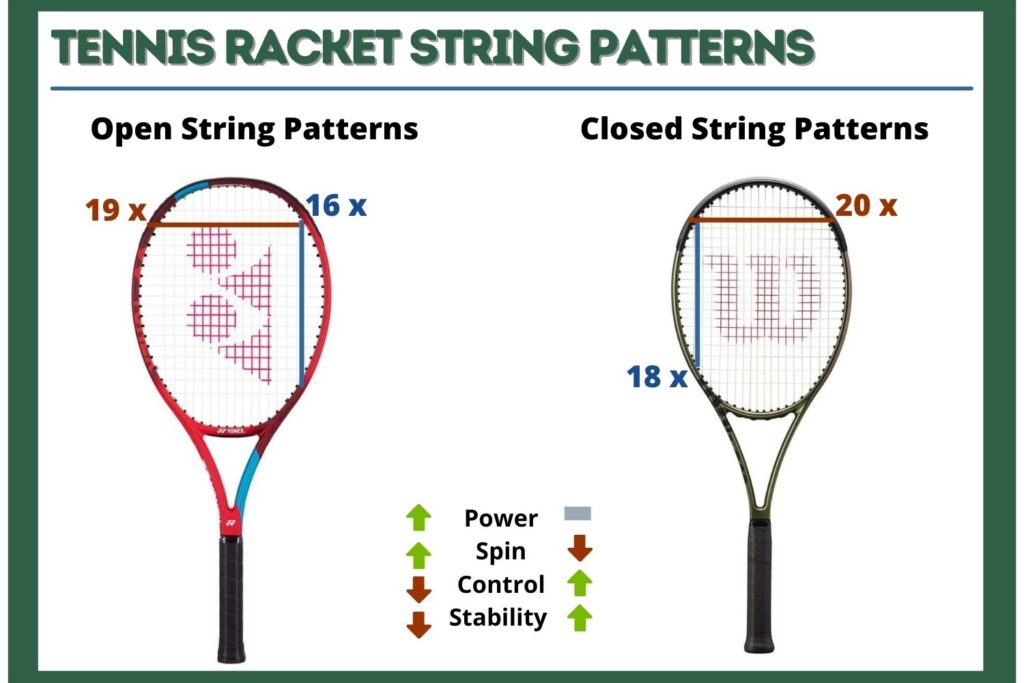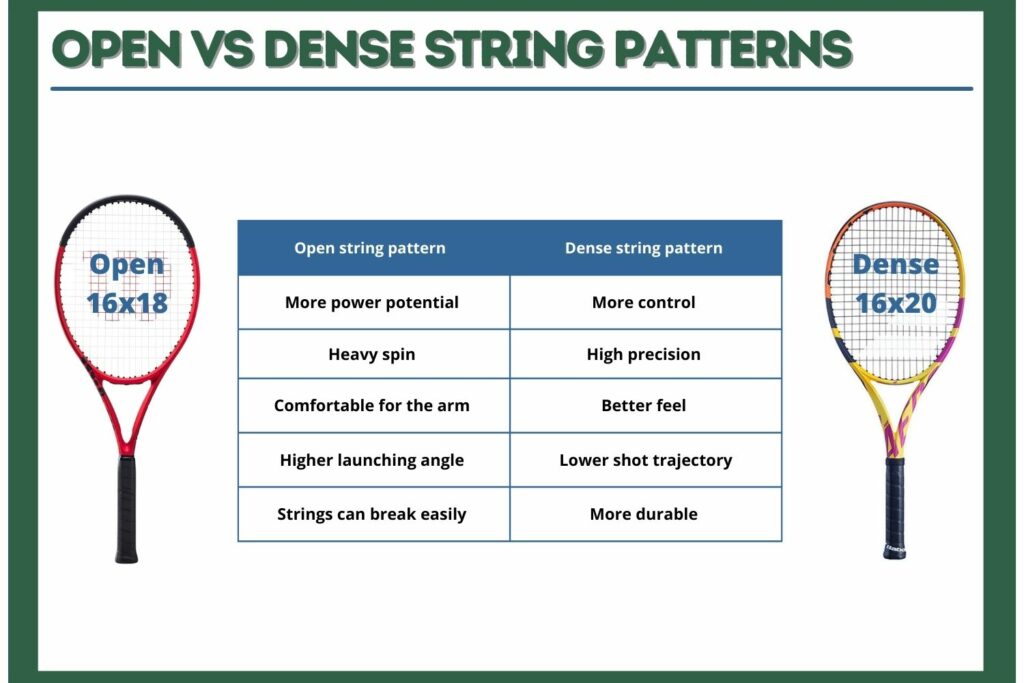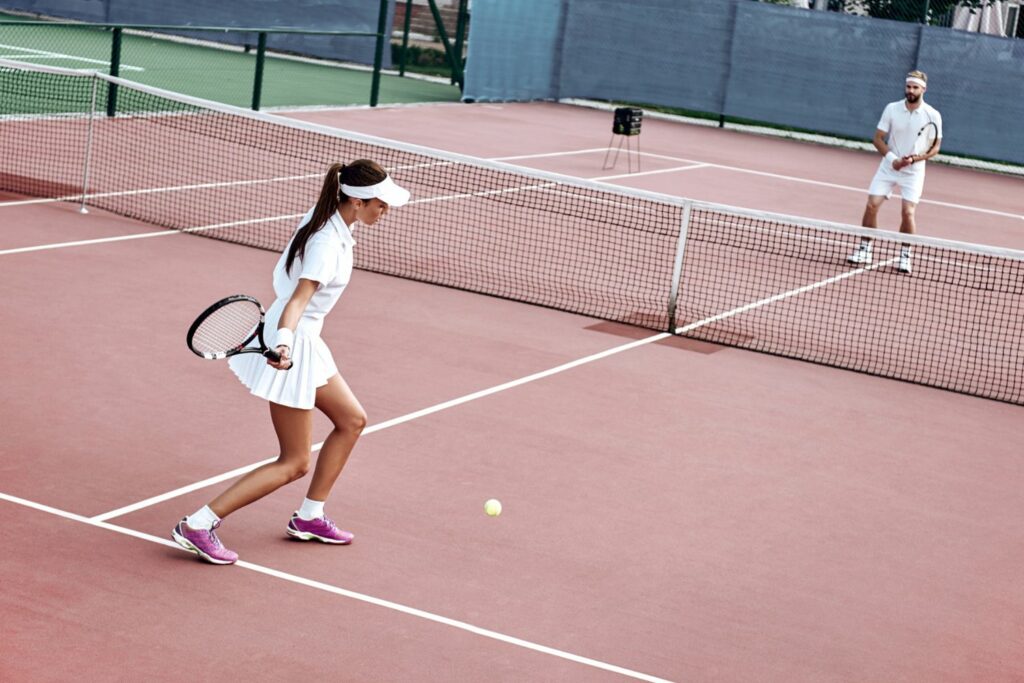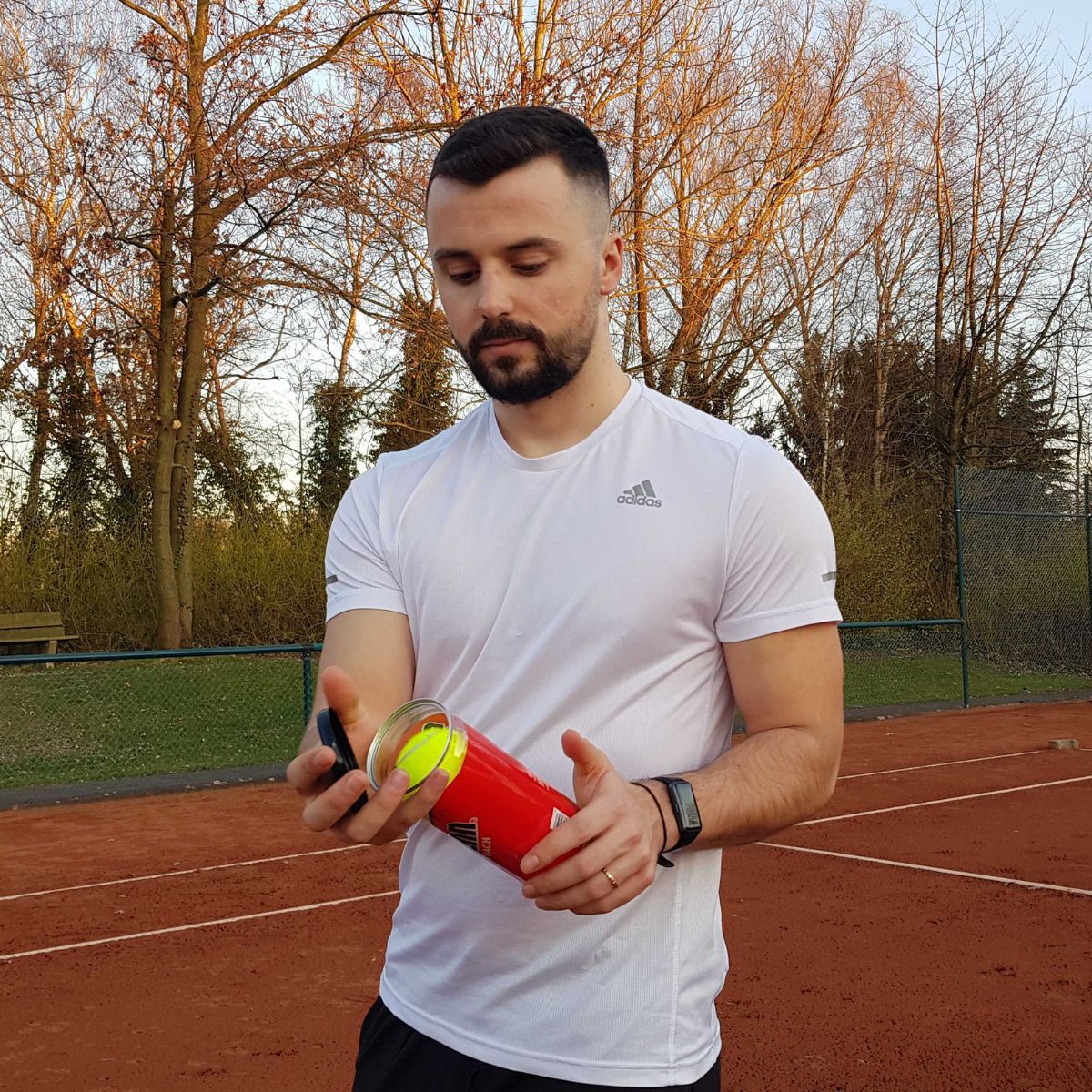- Tennis racket string pattern refers to the total number of strings on a racket’s frame.
- Racket frames can be classified as dense or open based on the number of crosses and mains.
- Open string patterns have more space between strings, allowing for more power, spin, and depth potential while being easier on the wrist, arm, and shoulder. However, they are also more prone to breakage.
- Dense string patterns have less space between strings resulting in less power and spin potential but offer increased control and stability along with a better feeling that allows players to connect better with their rackets. They are also more durable.
- There is a wide range of other string patterns available that offer different benefits depending on which category they fall into (open vs dense).
Tennis racket string pattern is always a hot topic among players, as everybody is trying hard to maximize their performance on the court. I know what you are thinking; another technicality in which I can mess up and waste money on a racket that won’t serve me right.
When I picked my first racket while still a newbie in tennis, the frame was stiff, it felt harsh, and it sure didn’t help me to improve or even learn anything properly.
Buying a new racket is a whole process in itself, and even as a beginner, you should make important decisions like the string type material, the gauge level, the tension rate, and now the pattern style. Sounds familiar or scary? Well, it doesn’t have to be! In this article, you’ll find all the information you need so that the next time you go shopping, you’ll feel like a pro.
What is a Tennis Racket String Pattern?
The tennis string pattern refers to the total number of strings on a racket’s frame. Vertical strings are typically called mains, while horizontal strings are referred to as crosses. In a racket’s specifications, mains always comes first; for example, a common 16×19 string pattern means that the frame has 16 mains and 19 crosses.
Open vs. Closed String Patterns
A tennis racket can have different string patterns depending on the number on the number of crosses and mains. Based on this characteristic, a frame might be considered as dense or open. When picking a tennis racket, this is one of the main decisions you have to make, as the string pattern can heavily influence your performance on the court.

The most common open string pattern is 16×19, while for a dense frame is 18×20. However, there are other options available for players of all skill levels and game styles who want to adjust features.
How Does String Pattern Affect a Tennis Racket
You might be wondering where the difference is between an open string pattern and a closed one. Well, there are many.
An open string pattern has more space in between strings allowing them to move freely when coming in contact with the ball. As a result, it can generate more power potential, and heavier spin, while helping the player to add more depth to the shots.
It has a more forgiving feel and is easier on the wrist, arm, and shoulder, making it a perfect choice for beginners, lower intermediates, or those players that are currently recovering from injuries. An open string pattern pushes the ball to launch from a higher angle so that the player has the opportunity to go for full, powerful swings with ease.
On the downside, strings with an open pattern are more prone to breakage, meaning you might have to replace them more often than you would like, especially if you have an aggressive approach to the game.
A dense tennis string pattern has a higher number of mains, so when they meet crosses, the space in between them is smaller. As a result, dense patterns don’t allow much movement when hitting the ball, meaning that the power and spin potential are significantly reduced.

However, a dense pattern offers more control and stability, allowing high precision when aiming for targets. It also offers a better feeling, which makes helps the player to connect better with the racket and redirect the ball effortlessly.
A dense string pattern is perfect for those who aim for difficult flat shots because it’s easier to control the ball’s trajectory. It is also more durable and usually causes the string to be less long because when dense strings come in contact with the ball, it causes fewer frictions.
While different brands are integrating new technology and continuously changing the frame’s angle positioning when it comes to strings, the safest way to predict their performance and feature is by looking at the patterns.
Most Common Tennis String Patterns
When shopping for a tennis racket, you will come across to different tennis racket string patterns, each with specific attributions. Here are some of them;
16×19 String Patterns
The 16×19 string pattern is typically found in modern rackets and has increased in popularity in recent years. It classifies as an open pattern and allows space between strings by default. It can generate a great mix of heavy spin and power potential, which is perfect for those players that aim for full swings.

One of the main advantages of a 16×19 pattern is its soft feeling, making it easier on the arm.
Usually, this is the go-to of beginners, recreational players, and those dealing with tennis elbow conditions or other injuries. It also allows a higher margin of errors while also giving the extra push needed for more depth with each shot.
That said, the launching angle of the 16×19 pattern is typically quite high, but this works well for starters in tennis. On the other hand, while it still provides with some descend levels of control, many players struggle to hit the targets with accuracy, repeatedly. This kind of pattern doesn’t hold tension very well, and the strings tend to break often.
16×20 String Patterns
16X20 strings pattern is a middle ground between the open and dense frame that offers a nice balance of different features. If you ever find yourself struggling to choose between a 16×19 vs. 18×20 string pattern, then this might be the perfect solution for you.
With the 16×19 pattern, the mains remain in a lower number, which translates into a good blend of power and spin, allowing the player full swings throughout the game. On the other side, the higher number of crosses offers more control and enhanced feel, as well as more stability on the court. It would be easier to redirect the ball or hit targets with accuracy, and it will still feel more comfortable than a regular dense pattern.
18 x 20 String Patterns
18×20 tennis racket string pattern is typically used by more advanced players that aim for control and precision in their game. It classifies as a dense string pattern and has become extremely popular, as manufacturers frequently use it for modern frames.

It offers a nice, crispy feel while providing more stability on the court, allowing you to hit targets with more precision and redirect the ball.
Flatter shots are a true delight with an 18×20 string pattern, as it makes it easier to keep the ball’s trajectory at a lower angle. These types of strings tend to last longer as well, as the dense pattern prevents breakage and friction.
On the other hand, 18×20 patterns are not forgiving at all and often feel harsher in the wrist, arm, and shoulder, which can lead to serious complications and even injuries when used for an accessive amount of time.
The amount of power and spin is also far more modest than with other types of string patterns. The choice is up to you, but if you decide to try an 18×20 pattern, it would be a good idea to use specific string materials, like the natural gut or multifilament, to soften the impact.
16×18 String Patterns
16×18 string pattern has increased in popularity recently, even though it has yet to become as recognizable as other options on this list. Many players opt out of this pattern to increase spin, which allows them to add more depth to their shots and push the ball further on their opponent’s side.
A 16×18 pattern has slightly fewer cross strings than a typical open pattern, which makes the frame have a firmer feel on the center, while at the edge, the response is softer. As a result, the pattern can generate a good amount of controllable power, which helps the player swing big without worrying about overhitting.
It also offers a good sense of control and stability on the court so that you can decide where to ball will land. On the downside, a 16×18 strings pattern doesn’t hold the tennis string tension well, and it’s not durable either, so you’ll probably have to replace them sooner rather than later.
Other String Patterns
Believe it or not, there are many other tennis racket string patterns out there that you probably have never heard of. Some might even be considered extreme, as they have unusual numbers of mains or crosses, such as 16×16, 14×18, 18×16, 16×15, 18×17, 16×15, 18×16, etc. These string patterns offer enhanced features depending on which category they fall into.
You can do the simple math by looking at the number of mains and crosses to choose between an open or dense string pattern or even an in-between option. Usually, for open patterns, you’ll get easy power and a very comfortable frame, but the downsides will also feel exaggerated.
The same goes for dense string patterns, which are a great choice if you rely solely on control and precision in your game, but that means you have to sacrifice power, spin, and comfort.
What String Pattern Do Pros Use?
You should always pick the string pattern of the frame based on your skill levels and needs on the court. While it’s very tempting to go for what your favorite players are using to try and emulate the same performance, that is simply not realistic for the vast majority.
Keep in mind that your favorite tennis star has years and years of training experience while you still have some catching up to, so be patient with yourself. However, if you are curious about what tennis racket string patterns the pros use, take a look at the chart below;
| Tennis Player | String pattern |
| Rafael Nadal | 16x19 |
| Roger Federer | 16x19 |
| Serena Williams | 16x19 |
| Naomi Osaka | 16x19 |
| Novak Djokovic | 16x19 |
| Dominic Theim | 18x20 |
| Stefanos Tsitsipas | 18x20 |
| Andy Murray | 16x19 |
| Alexander Zverev | 18x20 |
| Iga Swiatek | 16x19 |
| Emma Raducanu | 16x20 |
What is the Best String Pattern for a Tennis Racket?
Choosing the right tennis racket string pattern for you is a very important decision, which, as explained above, affects the way you perform and feel on the court. Nowadays, most rackets come pre-string, but usually, there are many different options you can choose from. Also, there is always the possibility of making some personal adjustments with a racket specialist.

The answer to what type of string pattern you should choose is obvious; open patterns are suitable for players who seek extra power and spin, while dense patterns suit players that look for control and stability. The in-between patterns are an excellent opportunity for you to explore different strings until you find the right option for you.
FAQs
Even with all that information about choosing the right tennis racket string patterns and how it affects your game, some questions may still remain. Read on for answers to some of the most commonly asked questions about tennis racket string patterns.
Q: What is the difference between 16×19 and 18×20 string pattern?
The main difference between 16×19 and 18×20 string patterns is that the former offers more power, spin, and comfort while the latter is better for control and stability. Both have their pros and cons, so it depends on your needs as a player to determine which one is more suitable for you.
Q: How to read tennis string patterns?
The string pattern is usually listed in the racket’s specifications, typically as a series of numbers. Each number indicates how many horizontal crosses are on the frame and how many vertical mains there are. So for example, 16×19 means that there are 16 horizontal crosses and 19 vertical mains across the entire frame.
Q: What is the difference between open and dense string patterns?
Open or loose string patterns are great for players who want extra power and spin, as well as comfort. Dense or tight strings are better if you’re looking for control and increased stability. There is a wide range of in-between options that offer some of the benefits from both options, which is why it’s important to explore different combinations until you find the right one.

